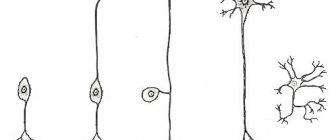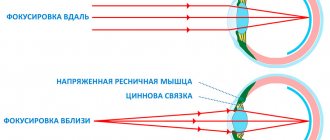Zefirka
> Medicine > Lobotomy: a little history and scary photos
Lobotomy is one of the darkest pages of psychosurgery, a terrible operation that was performed on patients suffering from mental disorders (mostly women). Even modern medicine doesn’t know much about mental health. The brain is a complex organ, and you can’t just poke around with a sharp piece of iron. Unfortunately, this is exactly what happened during a lobotomy and the results of such surgical procedures were very disastrous. When we think of doctors, we think of someone we can trust. After all, they definitely understand this! Especially with something as complex as mental illness. And that's what makes the lobotomy story so tragic. All these patients clearly suffered (although not all of them were sick) and trusted the doctors, but the doctors deceived them. So here are some basic facts about the history of lobotomy.
Why don’t everyone who recover from coronavirus infection lose their sense of smell?
Anosmia usually develops on days 4–6 of illness.
By 10–14 days, most people have recovered and the ability to distinguish aromas returns. But for some, the defect remains. You need to understand that any disease cannot occur in the same way in different people. No two organisms are identical, and accordingly, diseases will progress differently. Other significant factors:
- Viral load is the number of microbes that have entered the body. The more, the more severe the disease.
- The virulence of a virus is the strength of its destructive (damaging) effect. Different types and subtypes of coronaviruses vary. Don't forget that viruses mutate and change.
- Immune memory. The more acute respiratory viral infections a person has suffered in his life, the more easily he suffers from coronavirus, the lower the risk of complications.
- Concomitant human diseases: diabetes mellitus, obesity, severe forms of hypertension, respiratory failure. And if these diseases are combined, coronavirus infection is even more severe.
Consequences of excision of the frontal lobe
At first, they were not interested in the well-being of patients after operations, so the first results seemed positive: the patients became calm and indifferent to what was happening.
As the wave of criticism from society grew, scientists began to track statistics. It turned out that the mortality rate after lobotomies was 6%.
In almost all cases, undesirable side effects were observed: epilepsy developed, motor disorders and speech disorders occurred.
Much more bleak consequences of psychosurgical intervention were changes in intelligence and behavior. Almost all those operated on lost control of themselves, became apathetic and incapable of goal-setting. Gradually, the patients developed dementia.
Reflection in society[ | ]
Lobotomy has been depicted and mentioned in many famous films and books, including the novel All the King's Men by R. P. Warren, the play Suddenly, Last Summer by T. Williams, the X-Files Season 4 episode "Anxiety", the novel One Flew Over "Cuckoo's Nest" by K. Kesey and its film adaptation of the same name, the thriller "Shutter Island" by Martin Scorsese (based on the novel of the same name by Dennis Lehane), the film "Sucker Punch", the film "Francis", a song by Green Day, a song by the group "Civil Defense" Lobotomy”, the fantastic action movie “Total Recall” and others. The dominant depiction of the effects of lobotomy in works of art is that of the patient falling into a vegetative state after the operation, unable to speak or think. In this way, the authors seek to portray the inhumanity of psychiatrists.
Cases of almost complete recovery after a lobotomy were rare - this happened, for example, with Howard Dally, who underwent the operation at the age of 12 and subsequently wrote a book about himself, “My Lobotomy”[22]. Another famous case was the story of Rose (Rosemary) Kennedy, sister of US President D.F. Kennedy, who, at the request of her father, was operated on by W. Freeman in 1941. Disabled by surgery, she spent the rest of her life in various institutions and died in 2005 at the age of 86.[22]
Indications for prescribing by psychiatrists of the past
Initially, leucotomy was used as a radical therapeutic measure to calm patients with mental illness. The invention of transorbital lobotomy contributed to the expansion of the list of indications for surgical intervention.
The operation was started for chronic pain, depression, insomnia, and nervous stomach disorders. Men began to bring disobedient wives to surgeons in the hope of pacifying their rebellious temperament.
Read about other brain surgeries in our Microsurgery section.
Who invented the lobotomy?
The first person who decided to use the procedure on people was Egas Moniz, a doctor from Portugal. He made his “discovery” in 1934 while observing the behavior of chimpanzees. The animal was extremely aggressive and was subject to removal of the frontal lobes of the brain. After the operation, the primate became calm and controllable.
Impressed by the result, the Portuguese neurologist suggested that it is also possible to correct the behavior of aggressive schizophrenics who are dangerous to society. At that time, they could only be calmed with the help of straitjackets and an ice-cold shower. The beginning of the century was marked by many wars and disasters, which did not improve people’s mental health. There were many mentally ill people and the hospital staff could not cope with everyone. Apparently, this is why the method was received favorably and was even awarded the Nobel Prize.
Psychiatrist and neurosurgeon Egas Moniz
An ardent supporter of the method in the United States was Walter Freeman, a practicing psychiatrist. His colleague was J. Watts, a neurosurgeon. It was Freeman who came up with a simplified manipulation that was accessible not only to neurosurgeons, but also to psychiatrists. Its essence was to penetrate through the thin bone behind the eye socket using a sharp long needle. According to legend, his first experiment was made in his home doctor's office, with an ice pick.
Walter Freeman
The sharp end of the instrument easily penetrated the thin bone, and the nerve fibers were cut using movements of the handle. The procedure was reminiscent of unscrewing a cork from a bottle of wine. Such gross interference in the subtle structure of the brain led to the fact that one quarter of the patients forever turned into helpless creatures capable of leading only a “vegetative” lifestyle.
Today it looks monstrous, but in those days doctors did not disdain popularizing their science and actively demonstrated various methods. In the 40s, transorbital lobotomy was performed in the presence of spectators as an attraction for the “miraculous cure of the mentally ill.” Freeman himself even toured different states in a special van and carried out operations on wheels.
Walter Freeman's lobotomy attracted many viewers. Many wanted to see him plunge steel needles into brain tissue through the thin bony wall of the eye socket. The neurologist hardly cared about hygiene: he often operated with his bare hands.
Freeman and his assistants even invented special tools to carry out this operation. They were called "leukot" and "orbitoclast".
Later, the invention and use of the method on people was considered harmful and its use was banned. Opponents of lobotomy campaigned for the award to be revoked, but the Nobel Prize for lobotomy was never revoked. However, in the entire history of the Nobel Prize this has never happened and is unlikely to ever happen.
The importance of surgery for medicine
Lobotomy became a milestone in the path of research and the search for treatments for mentally ill people. And it turned out to be a huge mistake, opening one of the darkest pages of world medicine. Moreover, all this took place not in the Middle Ages, but in the fairly enlightened twentieth century, and was allegedly developed with good intentions... But the operation began to be carried out for far-fetched reasons. In addition to emotional women and disobedient children, representatives of sexual minorities, in particular homosexuals, were “treated” with it.
It is worth noting that in the Soviet Union, lobotomy was not carried out for long and not on such a large scale. Although, it would seem, we are talking about difficult times for the country with mass repressions and heavy losses in the Great Patriotic War. However, it was Soviet doctors who were among the first in the world to sound the alarm, criticizing the arbitrary prescription of lobotomies to almost all patients with behavioral disorders. Having carried out the operation in 1944 using its own technique, developed on the basis of the Moniz method, in the USSR five years later its use was strictly regulated. And at the end of 1950, lobotomy was banned in the USSR as a method that contradicted the basic principles of Pavlov’s theory.
Surgically induced childhood
Freeman coined a term for people who had recently undergone a lobotomy: surgically induced childhood. He believed that patients' lack of normal mental abilities, distraction, stupor, and other characteristic effects of lobotomy occurred because the patient regressed back to a younger mental age. But at the same time, Freeman did not even imagine that damage could be caused to the individual. Rather, he believed that the patient would eventually “grow up” once more: re-adulting would occur quickly and ultimately lead to complete recovery. And he suggested treating the sick (even adults) in the same way as naughty children would be treated.
Why is a lobotomy needed?
An important question that arises in the mind of any sane person: why was a lobotomy done? Of course, with good intentions. Initially, aggressive and violent mentally ill people were pacified in this way. Then they began to resort to this method for other purposes.
Most often, women became victims of manipulation. Sometimes even children were exposed.
Of course, such a radical method of achieving obedience has found its fans and those who want to pacify too temperamental wives or disobedient children. Violation of human rights against them was not considered something special; there were enough far-fetched reasons for the operation. Women were tortured for hysteria, despondency, depression and grumpiness, and children for disobedience and what is now called hyperactivity.
It was convenient for men of that time. This kind of operation turned people into obedient pets (in most cases). After the operation, the number of years lived was significantly reduced, unless the patient died under the hands of a surgeon (psychiatrist). It was a convenient way to get rid of unwanted relatives, turn rich heirs into obedient puppets and make temperamental wives into house (sexual) slaves.
A person who opposed the system could also become a victim of this operation. This is exactly what the feature film “One Flew Over the Cuckoo’s Nest” is dedicated to, the plot of which develops in a mental hospital of that time. It vividly captures the image of a man with a lively, inventive mind, who in the end turns into a lowing humanoid animal that has completely lost his personality.
How is a lobotomy done?
The next section is not for the faint of heart, since it is devoted to how a lobotomy is performed, or more precisely, how this operation was performed in the first half of the last century. It is known that the first operation on humans was performed on a woman suffering from paranoid psychosis.
To get rid of the obsession, two holes were made in the skull using a drill (drilled). Then alcohol was injected directly into the brain, which destroyed a piece of white matter (part of the brain) in the frontal lobe. Later, Freeman abandoned the perforation of the skull and used a simplified method; the doctor worked with an instrument called a leukot. It was a loop of wire that easily destroyed brain tissue. It was this procedure, which was within the power of an unqualified specialist, that was called transorbital lobotomy.
How was a transorbital lobotomy performed? It didn't look as scary as it seems. No one stuck needles directly into the eye. Access to the brain was carried out through the area above the upper eyelid, under the brow ridge. The skin in this area was disinfected and the doctor made a small incision. Then a thin knife was inserted into it and, using a hammer, the bone inside the eye socket was pierced without damaging the organ of vision itself.
Then, using another scalpel, the nerve fibers were cut inside the frontal lobes (it was inserted at an angle of 20 degrees). The bleeding was removed using a probe, and a suture was placed on the wound. Freeman believed in his power so much that he could perform this operation even with a kitchen ice knife when there were no lobotomy tools at hand.
He suggested using electricity as an anesthesia, since unpleasant sensations arise only in the first stages of the operation. There are no pain receptors in the brain and the patient does not experience discomfort during the dissection of nerve fibers.
Soviet doctors used a more drastic method; they opened the skull and performed trepanation. On the one hand, it was more painful, but on the other, it made it possible to perform more precise and subtle actions on the brain.
Brain lobotomy was intended to treat schizophrenics and people with other severe neurological disorders. The indications for the procedure were aggressive behavior and the ability to harm oneself and others. Over time, manipulation has become so popular that cases of unjustified interventions have become more frequent.




